Angus Beef is internationally known as Aberdeen Angus, and was one of the first cattle breeds exclusively bred for beef production.
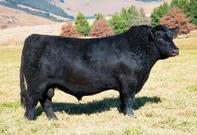
The breed takes its name from its place of origin, namely county Angus in Aberdeenshire, North East Scotland, where in the early nineteenth century, it was bred out of the predominantly black cattle of the region, known as “doddies” and “hummlies”. Hugh Watson is considered the founder of the breed.
His favourite bull, called Old Jock, was born in 1842 and given the number “1” in the Scotch Herd Book, which was founded in 1862. His favourite cow, named Old Granny, was born in 1824 and lived to produce 29 calves over her 35-year lifespan.
International Production
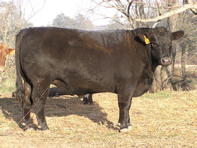
Angus has over the years become a leading international beef breed, because of the excellent quality of its meat, the fact that it is polled, in other words, it is born without horns, and its good feed conversion ratio, which means it is able to reach an acceptable marketing weight in a short period.
In South Africa, the cattle are usually market-ready by the time they reach twelve to fourteen months of age.
Red Versus Black

There is no genetic difference between Red and Black Angus cattle, but animals with the red colour are claimed to be less sensitive to heat stress, reducing their risk of cancer and sunburned udders.
The red colour variation is believed to have developed when the Scottish around the eighteenth century imported Longhorn cattle, which are predominantly red, to breed larger draught oxen. South African producers prefer the Red over the Black Angus cattle, which is reflected by the fact that more than seventy percent of the Angus cattle listed on SA Studbook are red.
In the rest of the world, however, more than ninety percent of the listed Angus cattle are black. The United States and Australia are of the few countries where Red and Black Angus cattle are listed separately.
Local Production
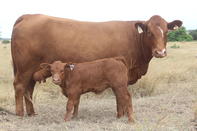
Angus cattle have been in South Africa for over a hundred years, with Charles Newberry, a farmer from the Free State, importing the first ten black Angus cattle in 1895.
The Angus Society was founded with twelve members in 1917 and has since grown to over 140 registered stud breeding members as well as 2 300 commercial beef farmers, who use Angus genetics in their farming operations.
Production Regions
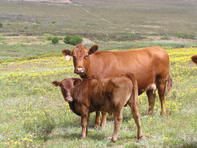
Angus cattle thrive in regions with cool climatic conditions, resulting in most of South Africa’s commercial purebred animals being produced in the Highlands of KwaZulu-Natal, the Eastern Highlands of Mpumalanga, the Eastern and Western Cape.
Angus cattle are nevertheless used for crossbreeding across the country, primarily with Brahman and Bonsmara, to enhance meat quality and add weight to offspring.
Meat Quality
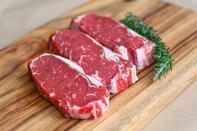
The Angus Society launched the Angus Beef project in 1989 in an effort to simulate the success of the Certified Angus Beef programme that was launched in the United States in 1978.
With the project, Angus beef is sold under the Angus label to allow customers to differentiate between Angus and beef produced from other cattle.
The Society regards Angus beef as superior to most other breeds, because of better marbling, the word used to describe intermuscular fat. This marbling helps to improve flavour, tenderness and keep meat moist while cooking.
In South Africa beef sold under the Angus label, have to comply with various production and quality standards and is also matured for 21 to 28 days.
By Glenneis KrielFor bulk or Angus Beef export enquiries please use the enquiry link below.